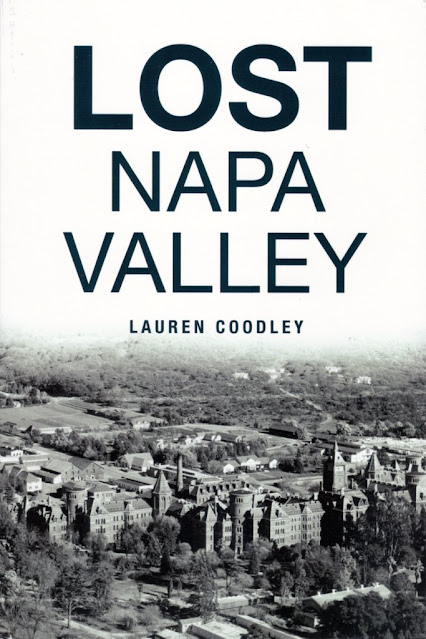Above: Lauren Coodley, Lost Napa Valley, Charleston, SC: The History Press, 2021. Image scan from personal copy.
The New Deal gave a helping hand to the Napa area
In her book, Lost Napa Valley, historian and author Lauren Coodley writes about New Deal improvements to the town of Napa and its surrounding area. The WPA worked on roads, water mains, a utility plant, culverts, retaining walls, and more, while the CCC built a road to the top of Mt. St. Helena and camped out in the Los Posadas forest (pp. 98-100).
The WPA also started a recreation program, which created a foundation of interest for the later Napa Parks & Recreation (pp. 117-118).
The shared experience of social & community loss
Coodley's book is primarily about Napa during the early-to-mid, and somewhat later 1900s (with some references back to the 1800s and earlier); and about changes that many of us can relate to. And a theme that builds as the book moves along (subtly at first, and more explicit at the end) is: Are the changes for the better?
We read about farmland "razed, and apartments now crowd out to the street" (p. 35). We learn of a large employer, a tannery, shuttering its business (where will the workers go? will they earn as much as they did at the tannery?). We see another large Napa employer, a clothing factory, close up shop. We are told that a mini-golf is "gone for good" (p. 123); a theater was replaced by "a condo complex" (p. 124); and a skating rink disappeared too. Small shops replaced by big corporate stores. Animals replaced by people - on a grand scale. It's all there. Many of us have seen a carbon copy of this "progress" in our own lives.
I grew up in Cape St. Claire, a town between Annapolis, Maryland and the Chesapeake Bay (Anne Arundel County). All the wooded areas that I played in as a child--that my friends made tree houses in--are gone. Every single square foot of them - replaced by house after house, with some houses placed at odd angles to make sure the maximum number of houses could be inserted for the developer's profit.
I remember watching Star Wars in 1977, with my father and brother, at a drive-in theater in Glen Burnie (in the northern part of Anne Arundel County). Gone. I also remember several natural areas along Ritchie Highway (a road that connects Annapolis to Baltimore). Gone. They've been ruthlessly shredded to the ground to make room for endless bedroom communities, ugly condos, and overkill shopping centers.
I remember we could go crabbing on the Chesapeake Bay and easily fill a bushel with big (BIG) crabs, steam 'em up, and have a inexpensive feast (oh, how I remember those glorious days!). But with thousands more people piling in the Bay area, the crabs got much smaller... and much more expensive at the stores. Is that really progress?
And where I currently live, in West Virginia, a paper mill closed just two years or so ago. Demand fell for the type of paper the mill produced. And so I ask again (as many have asked, I'm sure): Where will the workers go? Will they earn as much as they did before?
What I'm trying to highlight is that, to fully appreciate Lost Napa Valley, you'd have to be from Napa. But to simply appreciate it, in a very basic way, you don't - because it will likely relate to what you've experienced too. The dubious goal of "progress," as many of us have probably discovered, is often just cover for development for profit, and for profit alone. (However, the developers do thank you for your cooperation... from whatever distant McMansion community they're living in).
As with her previous local history works, Lauren Coodley's Lost Napa Valley provides a good example, or even a template, for those wishing to write their own local histories. Though the overarching theme is loss, it is not a dark book - it is a celebration of Napa's past, punctuated here and there by (very appropriate) feelings of loss.

Lauren is not only a skilled historian, she is, by soul, a Professor. What she professes is critical and empathetic thinking about change and how it impacts Communities. By extension, this requires introspection of one’s choices and local involvement.
ReplyDeleteLauren's in-depth research, deep respect for Napa Valley, and keen writing skills make her among the best authors of local history. Another fascinating read is her biography of Upton Sinclair (2013).
ReplyDeleteLauren's in-depth research, deep respect for Napa Valley, and engaging writing style set her among the best authors of local history. Another fascinating read in her biography of Upton Sinclair (2013).
ReplyDelete